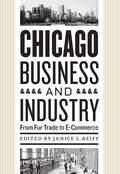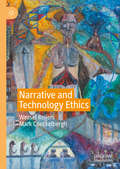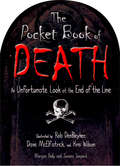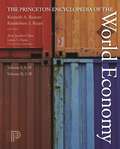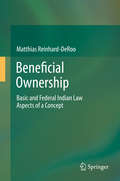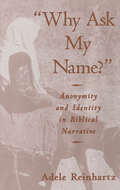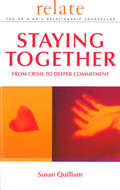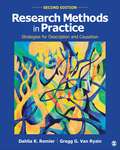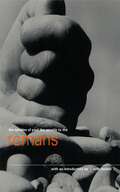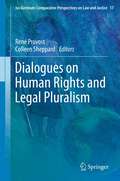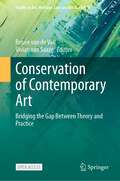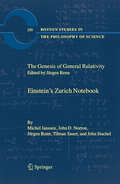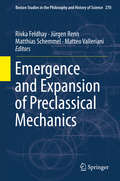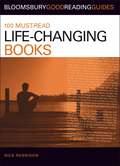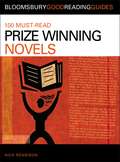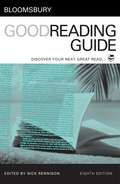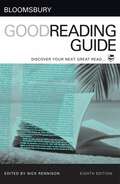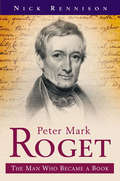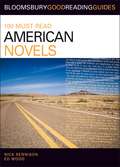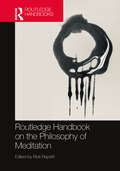- Table View
- List View
Chicago Business and Industry: From Fur Trade to E-Commerce
by Janice L. ReiffFrom its humble beginnings as a fur-trading outpost, Chicago has become one of the foremost centers of world finance and trade. With its blue-collar work ethic and an economic history that extends into virtually every segment of American industry, it certainly lives up to its moniker as the City That Works. Drawing on the award-winning Encyclopedia of Chicago, Janice L. Reiff has compiled a unique history of work in the Windy City. Beginning with an overview of the city’s commercial development, Chicago Business and Industry considers how key industries shaped—and were shaped by—both the local and global economies. The city’s phenomenal population growth, its proximity to water, and its development of railroads made Chicago one of the most productive markets for lumber and grain throughout the nineteenth century. The region’s once-booming steel industry, on the other hand, suffered a dramatic decline in the second half of the twentieth century, when already weakened demand met with increasing international competition. Chicago Business and Industry chronicles the Chicago region’s changing fortunes from its beginning. Reiff has compiled and updated essays from the Encyclopedia covering the city’s most historically famous—and infamous—companies, from the Union Stock Yard to Montgomery Ward to the Board of Trade. The book concludes with a historical account of labor types and issues in the city, with attention to such topics as health-care workers, unemployment, and unionization. Today, Groupon and a host of other high-tech firms have led some experts to christen Chicago the Silicon Valley of the Midwest. Reiff’s new introduction takes account of these and other recent trends. Engaging, accessible, and packed with fascinating facts, Chicago Business and Industry invites readers into the history and diversity of work in the city, helping them understand how Chicago became Chicago.
Narrative and Technology Ethics
by Wessel Reijers Mark CoeckelberghThis book proposes that technologies, similar to texts, novels and movies, ‘tell stories’ and thereby configure our lifeworld in the Digital Age. The impact of technologies on our lived experience is ever increasing: innovations in robotics challenge the nature of work, emerging biotechnologies impact our sense of self, and blockchain-based smart contracts profoundly transform interpersonal relations. In their exploration of the significance of these technologies, Reijers and Coeckelbergh build on the philosophical hermeneutics of Paul Ricouer to construct a new, narrative approach to the philosophy and ethics of technology. The authors take the reader on a journey: from a discussion of the philosophy of praxis, via a hermeneutic notion of technical practice that draws on MacIntyre, Heidegger and Ricoeur, through the virtue ethics of Vallor, and Ricoeur’s ethical aim, to the eventual construction of a practice method which can guide ethics in research and innovation. In its creation of a compelling hermeneutic ethics of technology, the book offers a concrete framework for practitioners to incorporate ethics in everyday technical practice.
The Pocket Book of Death: An Unfortunate Look At The End Of The Line
by Morgan Reilly TempestA laugh-out-loud miscellany of everything you ever wanted to know about death. From bizarre funeral practices and macabre urban myths to lucrative jobs in the death business. Accompanied by cartoons from the creators of the hit webcomic, ‘Cyanide & Happiness.’
The Princeton Encyclopedia of the World Economy. (Two volume set)
by Kenneth A. Reinert Ramkishen S. Rajan Amy Joycelyn Glass Lewis S. DavisIncreasing economic globalization has made understanding the world economy more important than ever. From trade agreements to offshore outsourcing to foreign aid, this two-volume encyclopedia explains the key elements of the world economy and provides a first step to further research for students and scholars in public policy, international studies, business, and the broader social sciences, as well as for economic policy professionals. Written by an international team of contributors, this comprehensive reference includes more than 300 up-to-date entries covering a wide range of topics in international trade, finance, production, and economic development. These topics include concepts and principles, models and theory, institutions and agreements, policies and instruments, analysis and tools, and sectors and special issues. Each entry includes cross-references and a list of sources for further reading and research. Complete with an index and a table of contents that groups entries by topic, The Princeton Encyclopedia of the World Economy is an essential resource for anyone who needs to better understand the global economy. Features: ? More than 300 alphabetically arranged articles on topics in international trade, finance, production, and economic development International team of contributors Annotated list of further reading with each article Topical list of entries Full index and cross-references Entry categories and sample topics: ? Concepts and principles: globalization, anti-globalization, fair trade, foreign direct investment, international migration, economic development, multinational enterprises Models and theory: Heckscher-Ohlin model, internalization theory, New Trade Theory, North-South trade, Triffin dilemma Institutions and agreements: European Union, International Monetary Fund, World Trade Organization, World Bank, Doha Round, international investment agreements Policies and instruments: dollar standard, international aid, sanctions, tariffs Analysis and tools: exchange rate forecasting, effective protection, monetary policy rules Sectors and special issues: child labor, corporate governance, the digital divide, health and globalization, illegal drugs trade, petroleum, steel
The Princeton Encyclopedia of the World Economy. (Two volume set)
by Kenneth A. Reinert Ramkishen S. Rajan Amy Joycelyn Glass Lewis S. DavisIncreasing economic globalization has made understanding the world economy more important than ever. From trade agreements to offshore outsourcing to foreign aid, this two-volume encyclopedia explains the key elements of the world economy and provides a first step to further research for students and scholars in public policy, international studies, business, and the broader social sciences, as well as for economic policy professionals. Written by an international team of contributors, this comprehensive reference includes more than 300 up-to-date entries covering a wide range of topics in international trade, finance, production, and economic development. These topics include concepts and principles, models and theory, institutions and agreements, policies and instruments, analysis and tools, and sectors and special issues. Each entry includes cross-references and a list of sources for further reading and research. Complete with an index and a table of contents that groups entries by topic, The Princeton Encyclopedia of the World Economy is an essential resource for anyone who needs to better understand the global economy. Features: ? More than 300 alphabetically arranged articles on topics in international trade, finance, production, and economic development International team of contributors Annotated list of further reading with each article Topical list of entries Full index and cross-references Entry categories and sample topics: ? Concepts and principles: globalization, anti-globalization, fair trade, foreign direct investment, international migration, economic development, multinational enterprises Models and theory: Heckscher-Ohlin model, internalization theory, New Trade Theory, North-South trade, Triffin dilemma Institutions and agreements: European Union, International Monetary Fund, World Trade Organization, World Bank, Doha Round, international investment agreements Policies and instruments: dollar standard, international aid, sanctions, tariffs Analysis and tools: exchange rate forecasting, effective protection, monetary policy rules Sectors and special issues: child labor, corporate governance, the digital divide, health and globalization, illegal drugs trade, petroleum, steel
Beneficial Ownership: Basic and Federal Indian Law Aspects of a Concept
by Matthias Reinhard-DeRooThe hunt for beneficial owners is on. Like an elephant, the beneficial owner hides in the jungle of complex legal structures, waiting to be discovered by eager prosecutors. But what lies behind this metaphor? What is a Beneficial Owner? Is beneficial ownership a right? What does this right encompass? What is the value of this right compared to other rights? And if beneficial ownership is not a right, is it still a legally relevant relation? How do courts, namely the U.S. Supreme Court deal with the concept? When do Anglo-American judges and European scholars resort to the concept?This book approaches these questions from two perspectives: legal fundamentals and the field of U.S. federal Indian law. Both legal theories and case law are scrutinized with the aim to find a better understanding of the basic conception and characteristics of beneficial ownership. Federal Indian law has been chosen for the study of the concrete implications of the beneficial ownership concept in what Roscoe Pound referred to as “the law in action.” To some, this choice of legal field might seem somewhat unusual. What answers could federal Indian law possibly offer with regard to pressing questions from the financial industry? As always, there is a short and a long answer. The short answer is that the analysis of an equally sophisticated field of law can open new perspectives on a given field of law. For example, not only potential criminals and tax evaders but also members of an older civilization are beneficial owners. The long answer can be found in this very book.
Why Ask My Name?: Anonymity And Identity In Biblical Narrative
by Adele ReinhartzUnnamed characters--such as Lot's wife, Jephthah's daughter, Pharaoh's baker, and the witch of Endor--are ubiquitous in the Hebrew Bible and appear in a wide variety of roles. Adele Reinhartz here seeks to answer two principal questions: first, is there a "poetics of anonymity," and if so, what are its contours? Second, how does anonymity affect the readers' response to and construction of unnamed biblical characters? The author is especially interested in issues related to gender and class, seeking to determine whether anonymity is more prominent among mothers, wives, daughters, and servants than among fathers, husbands, sons and kings and whether the anonymity of female characters functions differently from that of male characters.
Contesting Symbolic Landscape in Jerusalem: Jewish/Islamic Conflict over the Museum of Tolerance at Mamilla Cemetery
by Yitzhak ReiterIn 2006 a dispute broke out regarding an initiative by the Simon Wiesenthal Center in Los Angeles (backed by Israeli authorities) to construct a Museum of Tolerance (MoT) in West Jerusalem. The museum was to be built on a plot of land that in the past had been part of the historic Muslim Mamilla Cemetery, which since the 1980s has served as a municipal parking lot. Debate centred on whether construction of a museum dedicated to human dignity on Muslim cemeterial land was justified. The Northern Islamic Movement and a group of 70 academics and eight Israeli civil society organizations (including rabbis) opposed the project, but their petition to Israel's High Court of Justice failed. Yitzhak Reiter presents the public and legal dilemmas at the individual level (an act of insensitivity to the Muslim minority in Jerusalem); at the political level (the right of equal treatment by the state and the right to administer holy properties [waqf] according to religious law and rulings of shari'a [Islamic law] courts); and at the universal level (can conflict over a holy place be addressed objectively from the ideological/political positions that the place symbolizes, and is a secular civil court competent/appropriate to adjudicate a religious conflict). Research for this book integrates a multi-disciplinary approach involving history, identity politics, and conflict resolution. Sources include documents obtained from the Shari'a Court of Jerusalem and Israel's High Court of Justice, as well as Islamic law and Israeli civil law literature, reports of experts submitted to the courts, and personal participation of the author, including discussions with key players and informants. The Mamilla dispute reflects a microcosm of conflicts over religious and national symbols of cultural heritage as well as Jewish majorityArab minority tensions within Israel.
Relate Guide To Staying Together: From Crisis to Deeper Commitment (Relate Guides Ser.)
by Relate Susan QuilliamPacked with relationship advice from Relate, the marriage guidance experts, Staying Together offers guidelines to help couples survive and grow through their relationship problems so that they need not separate and may maintain their commitment to each other. Case histories, quizzes and questionnaires show how this is possible and even how to make a partnership stronger. The book covers how to: --confront difficulties --understand your partner --re-negotiate an improved relationship --develop skills to make improvements last --assess when problems first appeared and how they developed --face changes --communicate and meet a partner's needs --create good times --build on commitment and happiness.
Research Methods In Practice: Strategies For Description And Causation
by Dahlia K. Remler Gregg G. Van RyzinThe textbook emphasizes the critical interpretation and practical application of research findings, and covers many cutting-edge issues and methods including: a more in-depth, contemporary focus on causation the logic and use of control variables with non-experimental data the use of visual path diagrams to better understand both causation and the use of control variables a fuller, more innovative treatment of quasi and natural experiments a focus on data collection for performance measurement a discussion of cutting-edge issues in sampling and survey research an integrated treatment of qualitative methods that appears throughout the book and emphasizes the integration of qualitative with quantitative methods.
Research Methods In Practice: Strategies For Description And Causation
by Dahlia K. Remler Gregg G. Van RyzinThe textbook emphasizes the critical interpretation and practical application of research findings, and covers many cutting-edge issues and methods including: a more in-depth, contemporary focus on causation the logic and use of control variables with non-experimental data the use of visual path diagrams to better understand both causation and the use of control variables a fuller, more innovative treatment of quasi and natural experiments a focus on data collection for performance measurement a discussion of cutting-edge issues in sampling and survey research an integrated treatment of qualitative methods that appears throughout the book and emphasizes the integration of qualitative with quantitative methods.
The Epistle of Paul the Apostle to The Romans (The Pocket Canons #20)
by Ruth RendellPaul was the most influential figure in the early Christian church. In this epistle, written to the founders of the church in Rome, he sets out some of his ideas on the importance of faith in overcoming mankind's innate sinfulness and in obtaining redemption. With an introduction by Ruth Rendell
Dialogues on Human Rights and Legal Pluralism (Ius Gentium: Comparative Perspectives on Law and Justice #17)
by René Provost and Colleen SheppardHuman rights have transformed the way in which we conceive the place of the individual within the community and in relation to the state in a vast array of disciplines, including law, philosophy, politics, sociology, geography. The published output on human rights over the last five decades has been enormous, but has remained tightly bound to a notion of human rights as dialectically linking the individual and the state. Because of human rights’ dogged focus on the state and its actions, they have very seldom attracted the attention of legal pluralists. Indeed, some may have viewed the two as simply incompatible or relating to wholly distinct phenomena. This collection of essays is the first to bring together authors with established track records in the fields of legal pluralism and human rights, to explore the ways in which these concepts can be mutually reinforcing, delegitimizing, or competing. The essays reveal that there is no facile conclusion to reach but that the question opens avenues which are likely to be mined for years to come by those interested in how human rights can affect the behaviour of individuals and institutions.
Conservation of Contemporary Art: Bridging the Gap Between Theory and Practice (Studies in Art, Heritage, Law and the Market #9)
by Renée van de Vall Vivian Van SaazeThis open access book investigates whether and how theoretical findings and insights in contemporary art conservation can be translated into the daily work practices of conservators or, vice versa, whether and how the problems and dilemmas encountered in conservation practice can inform broader research questions and projects. For several decades now, the conservation of contemporary art has been a dynamic field of research and reflection. Because of contemporary art’s variable constitution, its care and management calls for a fundamental rethinking of the overall research landscape of museums, heritage institutions, private-sector organizations and universities. At first, this research was primarily pursued by conservation professionals working in or with museums and other heritage organizations, but increasingly academic researchers and universities became involved, for instance through collaborative projects. This book is the result of such collaboration. It sets out to bridge the “gap” between theory and practice by investigating conservation practices as a form of reflection and reflection as a form of practice.
The Genesis of General Relativity: Sources and Interpretations (Boston Studies in the Philosophy and History of Science #250)
by Jürgen RennThis four-volume work represents the most comprehensive documentation and study of the creation of general relativity. Einstein’s 1912 Zurich notebook is published for the first time in facsimile and transcript and commented on by today’s major historians of science. Additional sources from Einstein and others, who from the late 19th to the early 20th century contributed to this monumental development, are presented here in translation for the first time. The volumes offer detailed commentaries and analyses of these sources that are based on a close reading of these documents supplemented by interpretations by the leading historians of relativity.
Emergence and Expansion of Pre-Classical Mechanics (Boston Studies in the Philosophy and History of Science #270)
by Jürgen Renn Matthias Schemmel Matteo Valleriani Rivka FeldhayThis book is divided into two sections. The first section is concerned with the emergence and expansion of a form of mechanical knowledge defined by us as pre-classical mechanics. The definition purports to the period roughly between the 15th and the 17th century, before classical mechanics was formulated as a coherent and comprehensive mechanical theory in the sequel of Newton's work. The investigation of problems that were isolated from each other at the time but cohered into some kind of stable broad intellectual framework characterizes pre-classical mechanics. The second section is dedicated to specific case studies that present the application of a pre-classical framework to determined problems and to the investigation of specific natural phenomena. It consists of five case studies that illustrate in detail a reconstruction of pre-classical mechanics in particular constellations. Early modern theoretical, technical and social contexts transformed ancient and medieval mechanical knowledge in the course of its transmission.
100 Must-read Life-Changing Books
by Nick RennisonNovels which transform our ideas about human possibilities, biographies which celebrate the achievements of extraordinary individuals, polemical works of non-fiction which oblige us to alter our views of the world or of human society: all of us can remember reading at least one book which made us think about the world anew. Here, the author of the popular Bloomsbury Good Reading Guide, selects the very best books which may or may not have changed the world, but which have certainly changed the lives of thousands of people who have read them. Some examples of titles included:Maya Angelou, I Know Why the Caged Bird Sings - a poignant recording of the author's triumph over the obstacles of being black and poor in a racist society.Paulo Coelho, The Alchemist. Santiago's meeting with the alchemist opens his eyes to the true values of life, love and sufferingThe Diary of Anne Frank Half a century later the story of a teenager coming to maturity in the most terrible of circumstances remains profoundly moving.Kahlil Gibran, The Prophet Gibran's poetic essays reveal his thoughts on everything in life from love and marriage to the enigmas of birth and death.Robert M. Pirsig, Zen and the Art of Motorcycle Maintenance Pirsig's narrator creates a philosophical masterpiece that has the power to change lives.
100 Must-read Life-Changing Books (Bloomsbury Good Reading Guides)
by Nick RennisonNovels which transform our ideas about human possibilities, biographies which celebrate the achievements of extraordinary individuals, polemical works of non-fiction which oblige us to alter our views of the world or of human society: all of us can remember reading at least one book which made us think about the world anew. Here, the author of the popular Bloomsbury Good Reading Guide, selects the very best books which may or may not have changed the world, but which have certainly changed the lives of thousands of people who have read them. Some examples of titles included:Maya Angelou, I Know Why the Caged Bird Sings - a poignant recording of the author's triumph over the obstacles of being black and poor in a racist society.Paulo Coelho, The Alchemist. Santiago's meeting with the alchemist opens his eyes to the true values of life, love and sufferingThe Diary of Anne Frank Half a century later the story of a teenager coming to maturity in the most terrible of circumstances remains profoundly moving.Kahlil Gibran, The Prophet Gibran's poetic essays reveal his thoughts on everything in life from love and marriage to the enigmas of birth and death.Robert M. Pirsig, Zen and the Art of Motorcycle Maintenance Pirsig's narrator creates a philosophical masterpiece that has the power to change lives.
100 Must-read Prize-Winning Novels: Discover your next great read... (Bloomsbury Good Reading Guides)
by Nick RennisonA large number of people each year make their reading decisions onthe basis of prizes like the Booker and Orange Guide to Fiction. Thisnew title in the successful Must-Read series provides an overview of prize-winning fiction over the decades. With 100 titles fully featured and over 500 read-onrecommendations, this unique survey of literature incorporates some ofthe finest contemporary fiction ever produced including SalmanRushdie's Midnight's Children (Booker), Jonathan Coe's What a Carve Up (John Llewellyn Rhys), Andrea Levy's Small Island (Orange), Louis de Bernieres's Captain Corelli's Mandolin (Commonwealth Writers' Prize), Zadie Smith's White Teeth (Guardian First Book Award), Arundhati Roy's The God of Small Things (Booker).As well as Booker and Pullitzer prize-winners the book also findsroom for those that have triumphed in less familiar prizes, such as theBetty Trask and the John Lewellyn Rhys. It looks at prize winners incertain genres such as crime and science fiction, as well as prizewinners from other countries: the French Prix de Goncourt and theAustralian Miles Franklin award. Because of the sheer range of prizesacross countries and genres - this is a diverse and rich list that nobook worm would want to be without.
Bloomsbury Good Reading Guide: Discover your next great read
by Nick RennisonDeciding what to read next when you've just finished an unputdownable novel can be a daunting task. The Bloomsbury Good Reading Guide features hundreds of authors and thousands of titles, with navigation features to lead you on a rich journey through some the best literature to grace our shelves. This greatly expanded edition includes the latest contemporary authors and landmark novels, an expanded non-fiction section, a timeline setting historical events against literary milestones, prize-winner and book club lists. An accessible and easy-to-read guide that no serious book lover should be without. "The essential guide to the wild uncharted world of contemporary and 20th century writing." Robert McCrum, The Observer
Bloomsbury Good Reading Guide: Discover your next great read (Bloomsbury Good Reading Guides)
by Nick RennisonDeciding what to read next when you've just finished an unputdownable novel can be a daunting task. The Bloomsbury Good Reading Guide features hundreds of authors and thousands of titles, with navigation features to lead you on a rich journey through some the best literature to grace our shelves. This greatly expanded edition includes the latest contemporary authors and landmark novels, an expanded non-fiction section, a timeline setting historical events against literary milestones, prize-winner and book club lists. An accessible and easy-to-read guide that no serious book lover should be without. "The essential guide to the wild uncharted world of contemporary and 20th century writing." Robert McCrum, The Observer
Peter Mark Roget: The Man Who Became The Thesaurus - A Biography (Pocket Essential Ser.)
by Nick RennisonEvery day thousands of people worldwide consult Roget's Thesaurus. How many stop to consider why that endlessly useful reference book is so called? Of those who know that it owes its name to the man who first devised it, how many know anything more about him? Yet Peter Mark Roget was one of the most remarkable men of the nineteenth century and he achieved much in his long life. He did not even begin the great work of classification which bears his name until he was 70. Before that, the polymathic Roget had already made his own contributions to knowledge in a dozen different fields from optics and anatomy to mathematics and education. He would probably have been surprised that his posthumous reputation rests on his thesaurus. No doubt he would have expected that it would be his involvement in the foundation of the University of London that would be his lasting legacy. Or his books on magnetism, galvanism and physiology. Or his scientific papers on persistence of vision, with their later impact on the development of motion pictures. Or his association with major thinkers such as the computer pioneer Charles Babbage and the philosopher Jeremy Bentham. The range of his interests was astonishing and, for sixty years, he was at the centre of the intellectual revolution of his times. Nick Rennison's biography reveals the full story of Roget's involvement with the great issues and the great personalities of the nineteenth century and recounts the forgotten life behind one of the most famous of all reference books.
100 Must-Read American Novels: Discover your next great read... (Bloomsbury Good Reading Guides)
by Nick Rennison Ed WoodWhich 100 novels represent the finest American literature ever produced? Let this book be your guide. Ordered A-Z by author this latest title in the popular Must-Read series provides a rich resource for your reading. It features 100 titles from 19th century classics: Melville's Moby Dick and Hawthorne's The Scarlet Letter, to the 1920s generation: Hemingway, F Scott Fitzgerald and William Faulkner, the Beat generation (Kerouac's On the Road) to the major writers of today: Toni Morrison (Beloved) Michael Chabon (The Amazing Adventures of Kavalier and Clay), Jonathan Franzen (The Corrections), Donna Tartt (The Secret History) and Barbara Kingsolver (The Poisonwood Bible).All the major figures are covered from Fenimore Cooper to the present day, as well as lesser known and more offbeat writers that you may not yet have discoverd such as Dawn Powell, William Maxwell and Marilynne Robinson. The Read-On suggestions provide up to 500 recommendations for further titles and a long Introduction provides contextual and historical background on American fiction, providing great value and everything you need to expand your range of reading.
Routledge Handbook on the Philosophy of Meditation
by Rick RepettiThis Handbook provides a comprehensive overview and analysis of the state of the field of the philosophy of meditation and engages primarily in the philosophical assessment of the merits of meditation practices. This Handbook unites novel and original scholarship from 28 leading Asian and Western philosophers, scientists, theologians, and other scholars on the philosophical assessment of meditation. It critically assesses the conceptual and empirical validity of meditation, its philosophical implications, its legitimacy as a phenomenological research tool, its potential value as an aid to neuroscience research, its many practical benefits, and, among other considerations, its possibly misleading interpretations, applications, and consequences. Following the introduction by the editor, the Handbook’s chapters are organized in six parts: • Meditation and philosophy • Meditation and epistemology • Meditation and metaphysics • Meditation and values • Meditation and phenomenology • Meditation in Greco-Roman and Judeo-Christian traditions A distinctive, timely, and invaluable reference work, it marks the emergence of a new discipline therein, the philosophy of meditation. The book will be of interest to an interdisciplinary audience in the fields of philosophy, meditation, Buddhism, Hinduism, Taoism, theology, and Asian and Western philosophy. It will serve as the textbook in any philosophy course on meditation, and as secondary reading in courses in philosophy of mind, consciousness, selfhood/personhood, metaphysics, or phenomenology, thereby helping to restore philosophy as a way of life.
Routledge Handbook on the Philosophy of Meditation
by Rick RepettiThis Handbook provides a comprehensive overview and analysis of the state of the field of the philosophy of meditation and engages primarily in the philosophical assessment of the merits of meditation practices. This Handbook unites novel and original scholarship from 28 leading Asian and Western philosophers, scientists, theologians, and other scholars on the philosophical assessment of meditation. It critically assesses the conceptual and empirical validity of meditation, its philosophical implications, its legitimacy as a phenomenological research tool, its potential value as an aid to neuroscience research, its many practical benefits, and, among other considerations, its possibly misleading interpretations, applications, and consequences. Following the introduction by the editor, the Handbook’s chapters are organized in six parts: • Meditation and philosophy • Meditation and epistemology • Meditation and metaphysics • Meditation and values • Meditation and phenomenology • Meditation in Greco-Roman and Judeo-Christian traditions A distinctive, timely, and invaluable reference work, it marks the emergence of a new discipline therein, the philosophy of meditation. The book will be of interest to an interdisciplinary audience in the fields of philosophy, meditation, Buddhism, Hinduism, Taoism, theology, and Asian and Western philosophy. It will serve as the textbook in any philosophy course on meditation, and as secondary reading in courses in philosophy of mind, consciousness, selfhood/personhood, metaphysics, or phenomenology, thereby helping to restore philosophy as a way of life.
